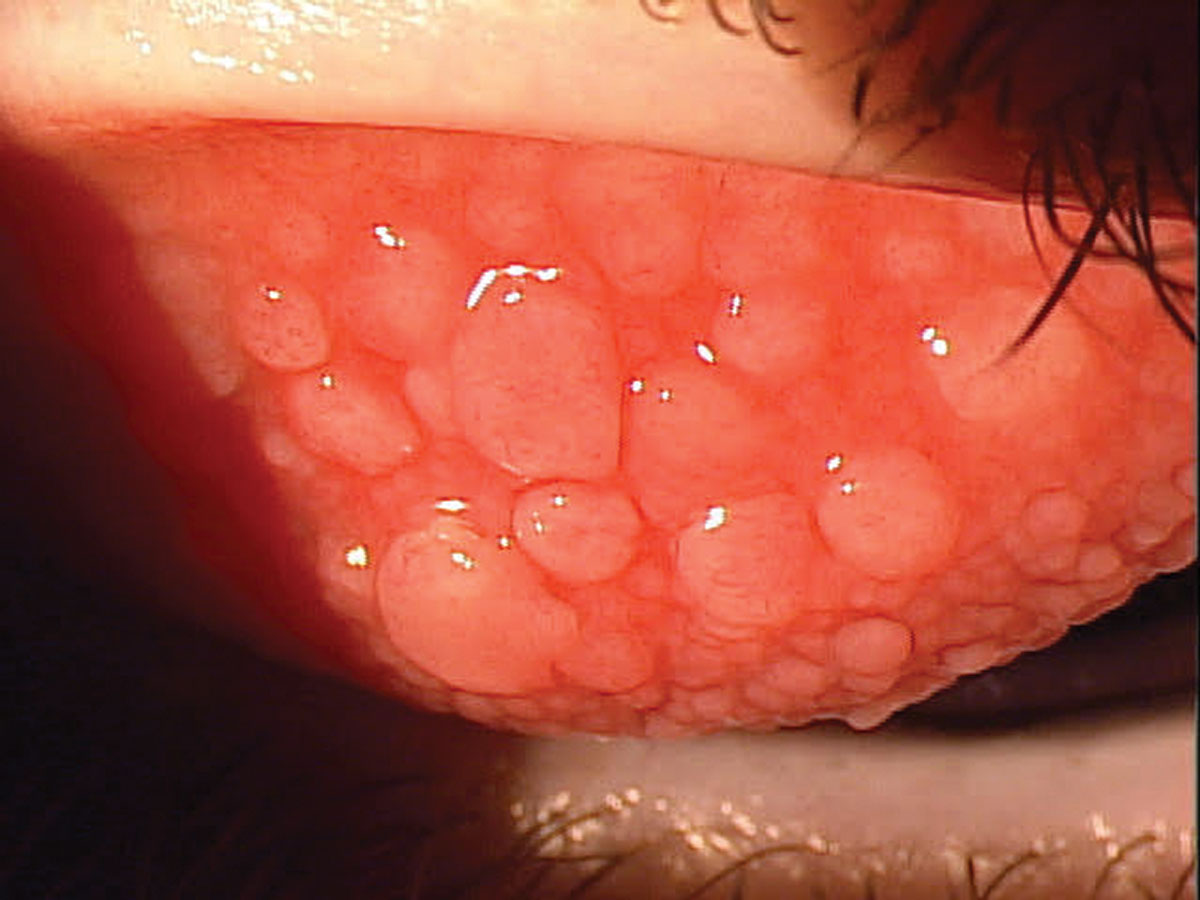 |
|
In 2018, patients diagnosed with VKC had significantly higher mean pharmacy costs, ophthalmologic-related physician office visits and clinical complications than non-KVC matched controls. Photo: Paul M. Karpecki, OD. Click image to enlarge. |
Primarily affecting children, vernal keratoconjunctivitis (VKC) is a chronic allergic ocular surface disorder that can lead to sight-threatening complications. Although several therapeutics are available today to help manage these patients, VKC still places a significant burden on the healthcare system in the US, a recent study demonstrated. Using claims data, its researchers found that despite intervention, these patients continue to experience higher rates of corneal complications and ophthalmic care costs vs. healthy controls, suggesting the need for alternative, more effective treatment solutions.
The retrospective matched-control analysis used claims data from the IBM MarketScan database to compare patients aged 18 and younger who had at least one claim for VKC in 2018 with a group of controls without VKC diagnoses. Of 6.6. million patients in the database, 3,865 were 18 or younger and diagnosed with VKC in the year studied, of which 422 fulfilled the inclusion criteria and were included in the VKC group. The control group comprised 1,266 matched individuals. The clinical and economic burden was quantified as the difference between groups in the prevalence of VKC-related conditions and the use and costs of VKC treatments.
The researchers reported in their paper, published in Ophthalmology, that in the year following index, “VKC patients received treatment with topical corticosteroids (60.7%), systemic corticosteroids (29.4%), topical immunomodulators (3.3%) and other VKC therapies (60.2%: nonsteroidal anti-inflammatory drugs, mast cell stabilizers and antihistamines)." At the same time, these patients also experienced a “significantly higher prevalence of corneal scarring, corneal ulcers and keratitis during the one-year follow-up compared with controls,” they noted. Additionally, VKC patients had a higher frequency of glaucoma or ocular hypertension.
Compared with controls, of which 0.9% filled prescriptions for topical corticosteroids, researchers suggest that the high percentage of VKC patients using these drugs (60.7%) is concerning since corticosteroids are associated with potentially severe complications, especially when used for extended periods.
The researchers conclude in their paper that “the frequency of corticosteroid fills and higher rates of corneal complications in the VKC group vs. matched controls suggest an unmet need for efficacious, long-term treatments for children with VKC.”
Koo EB, Yu TM, Layton AJ, et al. Burden of VKC in the US: a retrospective claims database analysis. February 5, 2024. [Epub ahead of print]. |

